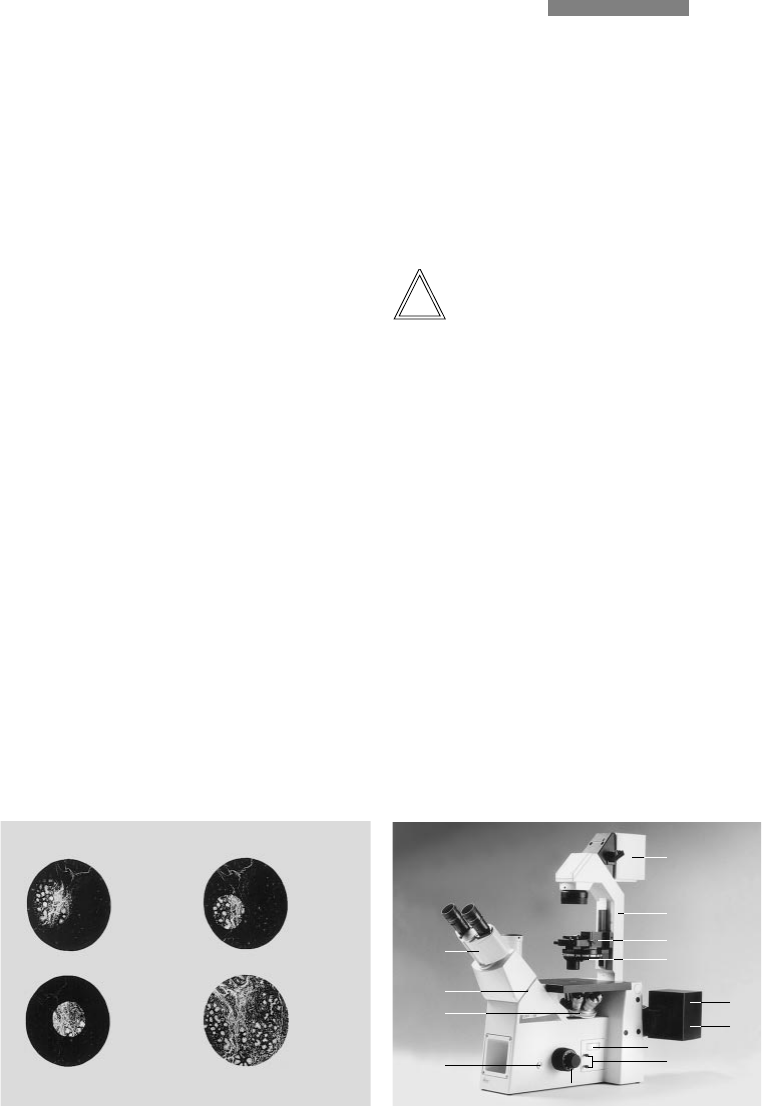
72
Fig.␣ 61␣ ␣ Koehler illumination␣
a Field diaphragm closed, not focused, not centred, b Field
diaphragm focused, but not centred, c Field diaphragm
focused and centred, but diameter too small, d Diameter of
field diaphragm = diameter of field of view (Koehler
illumination)
Setting Koehler illumination
Turn a 10x objective into the light path and focus
the specimen.
– Engage the condenser disc into the “H” =
Hellfeld = brightfield position if necessary.
– Close the field diaphragm.
– Adjust the height of the condenser until the
edge of the field diaphragm is sharply in focus
and also:
Centre the image of the field diaphragm in the
middle of the field of view with the two cen-
tring screws.
Open the field diaphragm until it just dis-
appears from the field of view.
When objectives are changed, the condenser
centration may have to be slightly adjusted
with the knurled screws and the field dia-
phragm reset.
The field diaphragm protects the specimen
against unnecessary heat and keeps all light
not required for imaging away from the
specimen, thereby enhancing contrast.
Therefore it is only opened wide enough to
just illuminate the observed or photographed
object field. A change in magnification al-
ways necessitates adjustment of the field
diaphragm.
– Narrow the aperture diaphragm until you
obtain the desired image contrast.
The aperture diaphragm determines the lateral
resolution, field depth and contrast of the
microscope image. The best contrast is
obtained when the apertures of the objective
and the condenser are roughly the same.
Fig.␣ 62␣ ␣
1 Binocular observation and phototube, 2 Tube clamp screw,
3 Objective nosepiece, sextuple, 4 Clamp screw for SLR/TV
adapter, front port, 5 Transmitted light lamphousing, 6 Trans-
mitted light illumination column, 7 Condenser holder, 8 Con-
denser 0.53 S23 with disc, 9 Screw for opening lamphousing
105, 10 Lamphousing 105, 11 Adjustment wheel for tube lens
1x, 1.5x or Bertrand lens (B), 12 Beamsplitter switch rods,
13 Coarse and fine focus
1
5
2
3
4
13
6
7
8
9
12
11
10


















